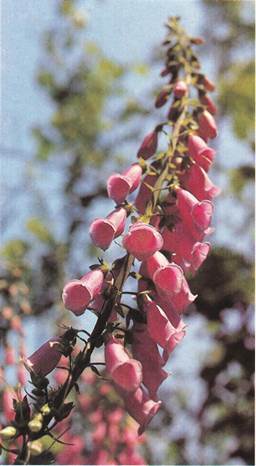
CATEGORIES:
BiologyChemistryConstructionCultureEcologyEconomyElectronicsFinanceGeographyHistoryInformaticsLawMathematicsMechanicsMedicineOtherPedagogyPhilosophyPhysicsPolicyPsychologySociologySportTourism
Improving on nature
Ultimately, we reach the very complex organic chemicals produced by the synthetic chemist. A synthetic chemist combines chemical elements and compounds to duplicate naturally occurring substances. He also produces compounds that do not occur naturally, including many drugs and pesticides. Many of these compounds have provided extraordinarily complex challenges to the synthetic chemist. Yet many of the compounds found naturally in plants and animals are produced with greater efficiency in nature than in the laboratory. It is thus more economical to extract them from a natural source, rather than to make them in the laboratory.
On the other hand, by studying the structures of natural substances, it has been possible in many instances to improve on them and obtain products even better suited to our needs. Synthetic chemists can produce variations of naturally-occurring penicillin that are

suitable for different kinds of therapeutic treatment. Similarly, a naturally-occurring insecticide in pyrethrum flowers has been modified to give a range of synthetic insecticides. These have a greater variety of pesticidal uses than the natural insecticide.
Oil and natural gasare
obtained by drilling. They are the chief starting materials for a wide range of important organic chemicals. These include plastics, pesticides, dyes, synthetic textiles, and some pharmaceuticals.
The foxglove plantDigitalis purpurea was for many years the principal source of the drug digitoxin. It was used to treat heart conditions such as cardiac failure. Today, this drug has generally been replaced by dig-oxin, obtained from another species of foxglove, Digitalis lanata. Many other drugs and useful organic chemicals are still obtained from plants or animals. In some cases, these substances cannot be synthesized economically. In other cases, chemists have not yet succeeded in synthesizing them at all.
 |

|
Natural gasis a major source of alkanes. It used to be burned off as a waste product at oil drilling installations. Increasingly, however, the gas associated with oil deposits is not wasted. It may be piped ashore from offshore fields, transported as a liquid in refrigerated ships, or converted to methanol for transport over longer distances.
Saturated
Aliphatic
Hydrocarbons
The saturated aliphatic hydrocarbons form a series of organic molecules that contain only hydrogen and carbon, hence the term hydrocarbon. Each carbon atom is linked to four other atoms—the maximum number possible— and is therefore called saturated (completely full). In every member of the series, the molecules are arranged in the shape of straight or branched chains with open ends (aliphatic), rather than in closed rings. Formerly known as paraffins, the members of this series are now called alkanes.
The alkanes
The first member of the alkane series and the simplest organic compound is methane, the chief component of natural gas. A molecule of methane consists of a single carbon atom linked to four atoms of hydrogen. Each of its chemical bonds involves two atoms—the carbon atom and one of the hydrogen atoms. Each bond consists of a pair of electrons, one
provided by each atom. The removal of one hydrogen atom from methane forms a methyl group. Because of the ability of carbon atoms to form chains, two methyl groups can join to form a compound that consists of two carbon atoms and six hydrogen atoms. This substance—called ethane—is the second member of the alkane series.
Just as ethane can be derived from methane, so can propane be derived from ethane. If one of the hydrogen atoms from the ethane molecule is replaced by a methyl group, a chain of three carbon atoms with eight hydrogen atoms is formed. This is propane. Its middle carbon atom, being linked to two other carbon atoms, has room for only two hydrogen atoms.
Isomerism
By repeating the process of replacing a hydrogen atom with a methyl group, the alkane series can be further extended to butane (with four carbon atoms), pentane (with five carbon atoms), hexane (with six carbon atoms), and even larger molecules.
Once an alkane molecule has four or more carbon atoms, it need no longer have the shape of a simple unbranched chain. Instead of adding another methyl group to the end of propane's three-carbon chain, for example, the methyl group can be attached to the middle carbon atom. This forms a branched chain. The central atom is linked to three other carbon atoms and only one hydrogen atom. Each of the other three carbons has three hydrogens attached.
This branched-chain molecule is called iso-butane, or 2-methylpropane (indicating that the additional methyl group is attached to the second carbon atom). The formulas of isobu-tane and ordinary straight-chain butane (called /7-butane, where n stands for normal) are the same. Both forms have the same numbers of carbon atoms (4) and hydrogen atoms (10). But their structures are different.
This phenomenon, in which molecules have the same chemical composition but a different structural arrangement of atoms, is called structural isomerism. The different forms are called isomers. The physical properties of structural isomers can vary widely. For example, /7-butane boils at a temperature of 31° F. ( — 0.5° C), whereas isobutane boils at 10.9°F. (-11.7° C).
Date: 2015-12-11; view: 1303
| <== previous page | | | next page ==> |
| Polynuclear complexes | | | Production and uses |